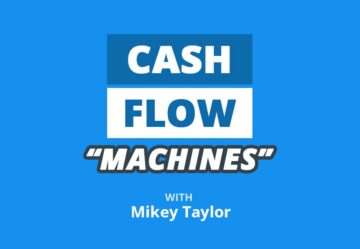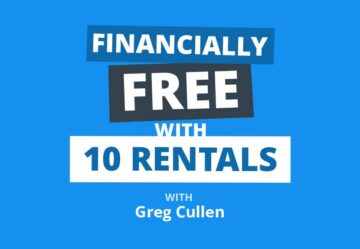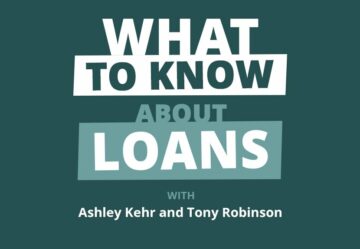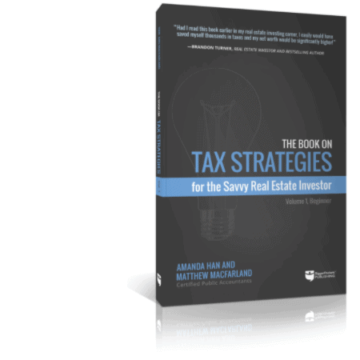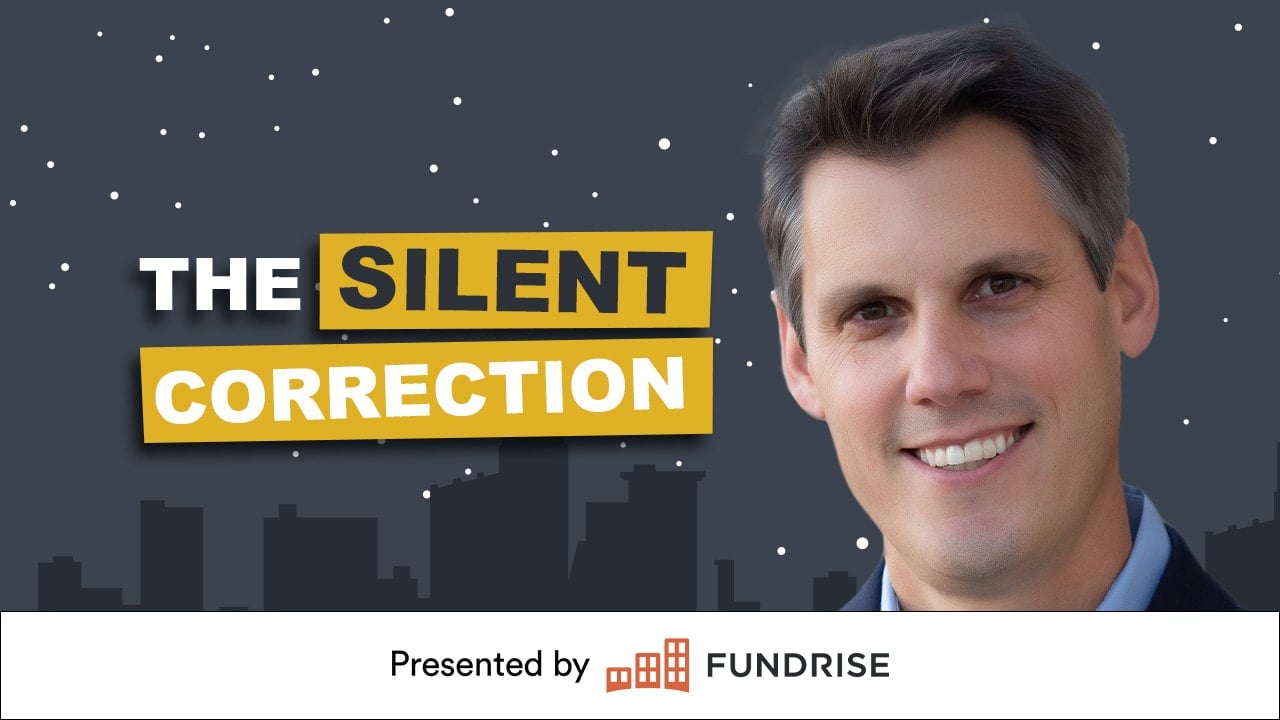
Home prices could become affordable without any of us noticing. In fact, home prices don’t even have to fall for the housing market to enter into a mild correction. With affordability hitting lows that we haven’t seen since the seventies and eighties, what could save today’s home buyers from paying for one of the most expensive mortgage payments of all time? Something must be done. And thankfully, it might already be happening.
If you want to know the truth behind silent housing corrections, market-abandoning buyers, and where we could be headed, you better ask Andy Walden from Black Knight. We brought Andy on the show to talk about everything from mortgage rates to unaffordability, delinquencies, foreclosure fears, and what can be done to help our home buyers. Andy spends all day, every day, playing with some of the most vital proprietary property data sets imaginable, and he has an answer to almost every question.
In this episode, Andy speaks on the housing market correction that could happen without home prices falling, why more home buyers are leaving the market, how mortgage rates could fall without the Fed’s input, and what could cause delinquencies to finally rise.
Click here to listen on Apple Podcasts.
Listen to the Podcast Here
Read the Transcript Here
Dave:
Hey everyone, it’s Dave. Welcome to this episode of On the Market. Today, it is just me, but I am joined by a fantastic guest, Andy Walden, who is the VP of Enterprise Research and Strategy at Black Knight. If you’re not familiar with Black Knight, they’re one of the premier data collection and analysis firms in the entire real estate investing industry, but they have a particular focus on mortgages. And I know, if you’re like me, you are probably obsessing about what is going on in the mortgage market, what interest rates are doing, why they’re so high, where they’re going to go and what it all means for real estate prices. And Andy does a fantastic job talking about this.
I was actually just chatting with him after the recording and I was saying that not many people can make mortgages as interesting and enjoyable to listen to as he did. So I think you all are going to really enjoy this episode with Andy. So I’m not going to have some big introduction here. We do have to take a quick break, but then we’re going to get quickly into our interview with Andy Walden of Black Knight, Andy Walden, welcome to On the Market. Thank you for joining us.
Andy:
You bet. Thanks for having me. Appreciate it.
Dave:
Can you start by just telling us a little bit about yourself and what you do at Black Knight?
Andy:
Yeah, absolutely. I head up the enterprise research and strategy team here at Black Knight, which in its simplest format, kind of my job on a day in and day out basis is really just playing in what’s really a phenomenal sandbox of data sets at Black Knight here. Whether it’s digging into the housing market specifically with our home price index or collateral analytics data or looking more at the mortgage side of the house and how folks are performing over there, using rate lock data and our [inaudible 00:01:58] mortgage performance data, really just weeding through those on a monthly basis and under uncovering the underlying trends of what’s going on in the market and then discussing them either internally or with folks like yourself. So excited to do that today.
Dave:
That’s great. And how did you get into this? Have you been in the real estate industry? Are you a data person by trade?
Andy:
Oh man, that’s a great question. I’ve kind of made the rounds in mortgage and housing. I started doing due diligence underwriting of mortgages being sold into mortgage backed securities and it was kind of in that 2003, four, five timeframe when it was the big subprime boom. And so I got to see all of those loans up close and personal in the early stages of the financial crisis and I’ve kind of followed those loans through my career. I went into credit risk oversight after that, I went into default mortgage servicing for a period of time as well, kind of working in an REO shop and seeing those loans as they went through foreclosure and into REO and went into the housing market, and then have been in data and analytics for the last 10 years here at Black Knight.
Dave:
Excellent. So you’re the right person for the long line of questioning I have for you.
Andy:
I hope so. I hope so.
Dave:
I think I represent our audience in that we’re all very curious about interest rates, mortgages, what’s going on here. This obviously impacts our audience of real estate investors a lot. So excited to have this conversation.
Andy:
Absolutely.
Dave:
Can you just tell us a little bit about which data sets are at top of mind for you that you think are the most interesting and relevant to today’s housing market?
Andy:
Yeah, absolutely. And really we’re leaving no stone unturned, it’s such an unusual housing market right now and even mortgage market as well, and so we’re really going into every data set that we have at our fingertips. We’re spending a lot of time, obviously with our home price index, it’s down to 22,000 different zip codes at five different price tiers across all the different product types and housing types, and so we’re spending a lot of time digging into that. We have what we call a collateral analytics data set, which is really a real time stock ticker of what’s going on in the market. We can get down to the neighborhood level and look at inventories and prices and price per square foot and all those different types of dynamics. One that we’ve really been leaning on more lately is called our optimal blue data and it’s rate lock data.
So folks that are going out there to take a mortgage, when you lock in your rate, we can see that volume and all the different characteristics of loans being taken out and it really gives you a 30 to 45 day leading indicator of what’s going to be happening with mortgage originations and even some indications in home sale volumes and what types of transactions and how borrowers are reacting to interest rates and behaving out there in the market. And then obviously we have an extensive platform and really cut our teeth in the mortgage market and looking at performance and foreclosure volumes and all those different dynamics as well. So really getting into every facet of the market and using all that data and even merging those data sets together to uncover things that we haven’t seen in the past.
Dave:
That’s incredible. I’m excited to talk about all of that, but I’m curious, from your perspective, since you look at this all day, what are the headlines from the data that you’re seeing?
Andy:
Really the late last year and this year, it’s been a lot about home affordability, it’s been a lot about housing market inventory. When we look at the housing market specifically, those clearly are the key indicators and obviously interest rates are a key component of that. And so when you look at affordability out there in the market and when you get into the later parts of May, we’ve seen when you just look at the principle and interest payment needed to buy the average home in the US, it is the highest that we’ve ever seen it here over the last few, really last few weeks out there in the market. So affordability really tight now, growing incomes improved that a little bit, it makes it marginally better than it was late last year, but affordability’s a massive challenge out there in the market. I don’t think I’m telling your listeners anything that they don’t know there, it’s less affordable now than it was at the peak of the market in 2006.
We’re looking at some of the least affordable housing we’ve seen since the 1980s, when everybody likes to talk about, I bought my first home at 17% interest rates, that’s kind of what we’re looking at right now in comparative terms from a home affordability standpoint. And then when you look at inventories out there in the market, we’ve seen really a 180 from what we saw late last year. The story of the housing market last year was inventories were building, interest rates had risen, demand was down, inventories were starting to build and prices were starting to soften. We’ve really seen that do an about face over really the last nine months as well, and inventories really starting to dip and it’s caused the housing market to really firm up this spring.
Dave:
Do you think that’s the primary reason why prices are starting to come up in, at least in a seasonal way, at this time of year?
Andy:
Yeah, absolutely. And it’s not even just seasonal trends. Obviously there’s ebbs and flows from a seasonal perspective, prices up in the spring and summer and then they fall in the winter. Even when you take that component out of the market and you look at seasonally adjusted numbers, you’re absolutely seeing prices firm up this spring, and to me, that is the number one component, that’s the key difference this spring versus what we were seeing late last fall. Affordability, as we mentioned, is roughly equivalent. We’ve seen interest rates bounce around, but affordability not materially better than it was late last year, but inventory has certainly compressed this spring.
And so when you look at home prices this spring and you just look at April for example, 0.46% seasonally adjusted growth, in terms of home prices this spring, the 30-year average is 0.48, so almost an average April this year. If you kind of close your eyes and take out everything else that’s going on in the market and everything else is abnormal, rates are abnormal, affordability inventory abnormal, prices have seen a relatively normal growth this spring, for lack of a better word. So kind of unexpected maybe to some degree, but normal this spring from a price perspective.
Dave:
You said unexpected, and I know I’m getting out of the realm of objective data here, I’m just curious about your opinion, but did you see this coming? Did you think that prices would be holding as firm as they are right now?
Andy:
Yeah, well, I mean it’s really tough to tell the short term movements in the housing market here where it’s going. I think, and we heard this a lot from Mike Sklarz, who runs our collateral analytics team, and he does a lot of forecasting of home prices and his stance the entire time has been, hey, prices are going to be relatively flat, this is going to correct more over time and allowing income growth than over price. And so certainly we saw some softening last spring, and I think you’re going to see ebbs and flows. There’s kind of dual risk in the market right now of the market potentially reheating, the market cooling off here, depending on where rates and inventories go. But over the long run, I think that’s kind of the expectation. We need this period of, at some point, whether it happens now or a year from now or two years from now, we need a point where home price growth cools to a level where income growth can outpace home price growth, that really has to happen here at some point in time.
Now the lack of inventory is keeping that from taking place here in the near term, but at some point we need to see an extended period of time of that taking place. Effectively, what we’ve seen is nine years worth of home price growth front loaded into the first two and a half years of this decade, at some point that has to normalize. Either we need to see above average levels of income growth, or at least we need to see income growth outpace home price growth for an extended period of time to bring affordability back in line.
Dave:
That’s so interesting. I never really thought of that sort of as a, quote, unquote, “correction,” but basically if home prices stay flat and incomes grow, even if that takes multiple years, that, in a way, is a correction. It’s just a very drawn out one and different from what people expect from the previous housing correction or a stock market type correction.
Andy:
And there are a number of ways that things can correct. One is just simply over price, and that’s kind of what we think of, I think because of the great financial crisis, and that’s the last correction that we went to, but a lot of that was distressed inventory flowing into the market. The dynamics are very, very different. It’s not likely that we’re going to see that type of environment where we go into oversupply with distressed inventory out there in the market. So you can see that type of correction where it’s just simply over price. You can see it over rates and you can see it over time.
So if you look back at the late ’70s and early 1980s and kind of that Volcker era, they squeezed inflation much like they’re doing today with rising interest rates. But then if you look at the wake of that, again, everybody says, “I bought my first home and an 18% interest rate, and that was normal back then.” Well, what you don’t see when you just hear that stat is rates fell by 9% in the next few years after that, and those folks were able to refi into lower rates, and if they weren’t, there would’ve been a big price correction at that point in time as well. So it can correct over rate improvements or it can correct over time, where you kind of see a more neutral housing market environment that allows price or income growth to outpace price growth.
Dave:
Wow, that’s a great way of looking at it. It’s really fascinating. I do want to dig in on some of the mortgage activity here because you and your company, Black Knight, have some of the best data out there about what is going on. You talked a little bit about rate lock activity. Can you first just explain to everyone what rate lock is and then tell us a little bit about what you’re seeing?
Andy:
Yeah. And for folks that have gone through the mortgage process, you go out there and you fill out an application and the next step is once you have a homeowner contract, so I’m talking specifically about the purchase side of the house at this point, once you put a home under contract, the next step is really to lock in your interest rate. You typically do that roughly 30 days before closing, and there’s a whole kind of process on the origination side of why that takes place, but that’s effectively when you lock in your interest rate to close that loan. Typically, you’re under contract at that point in time and you’re preparing to close that loan. And it does a couple different things, one way that we use it is to look at overall volumes out there and what’s going on in the market. And when we look at those rate lock volumes out there, we really see that they’ve been and remain compressed here towards the tail end of May.
We’ve seen a few times this year where interest rates have dropped down near 6% and you’ve seen the volume of folks going out there and locking in rates to purchase a home, it’s gotten within 15% of pre-pandemic levels and it’s shown some pops at points in time in January and in March of this year when rates have eased. When we look at what’s going on in late May, what you see is that rate lock volumes have fallen to their lowest level, comparative to pre-pandemic, so we’re looking at just the deficit of volume taking place out there. They’re more than 30% below where they were prior to the pandemic, comparing that to 2018/19 levels.
And what that all means, if I lost anybody in the technical jargon there, what that all means is it is really going to lead to compressed sales volumes, slow home sales speeds out there, low transaction volumes remaining out there in the market. We’re off the lows we saw earlier this year, but they’re going to remain compressed, they’ll be bouncy and you’ll see some ups and downs. But what that says is they’re going to remain compressed here in the near term and in the demand side of the equation, folks willingness to buy a home is continuing to be compressed by high interest rates and tight affordability.
Dave:
In the past, there is some correlation, not causation, between declining sales volume, which you’re talking about, and declining prices. Why do you think this instance in this climate is different?
Andy:
Because you’re seeing, I mean, if you go back to your economics 101 class, it’s the supply and demand curve and they’re both falling at the same time. So not only is demand coming down from rising interest rates, but supply is down at the same time, and so it’s leading to just simply a move in where those intersect. And so you’re seeing fewer sales, lower quantity, but prices are remaining relatively stable because I mean, let’s look at some simple numbers, demand, I just mentioned it’s 30% low, the number of locks out there in the market are 30% low, inventory out there right now in the US is 50% low. So you’re actually seeing a larger compression in inventory than you are in demand, and so you’re still seeing demand that’s higher than supply, even though they’re both comparatively low and it’s holding prices high.
Dave:
All right, that makes total sense to me. I’ve had to, Andy, wait 13 minutes to ask this question because I was eager to ask you this when you explained that you have some data about how home buyers are reacting to fluctuations in mortgage rates, and I was very excited to ask you, so tell us about it.
Andy:
Yeah, that’s right. And there’s kind of this rough equation, 1% rise in interest rates equates to roughly a 12% reduction in buying power. And so I’ve heard at points in time folks say, “Well, six and a half, 7%, that’s a normal interest rate, and it’ll take folks some time to normalize to that and realize that that’s the new norm, but once they do, things will go back to normal.” That’s not really the way it works. There’s math behind this, and when you see interest rates rise, it reduces buying power. And just because 7% interest rates were the norm in 2000, doesn’t mean that we can just all of a sudden move interest rates to 7% today, and everything moves in accordance because home prices have outpaced incomes based on those lower interest rates. It’s allowed you to buy more home than your income traditionally would afford, and so you’ve seen more home price growth than you’ve seen income growth.
And so if you just simply revert back to a 7% rate environment, it really pinches the demand out there in the market and it does really reduce the buying power and reduce the demand out there. So that’s exactly what we’re seeing, and we kind of talked through some of those numbers earlier, in terms of the impact that that’s having on demand. I think the interesting conversation about rates is where are they going? What are we going to see here in the long run, and what does that ultimately do to buying power in the market? And you’ve seen those rate forecasts.
One, the market’s very poor historically at estimating where interest rates are going to go, just to be quite honest. It’s something that you see a large degree of variance between forecast and reality over the last few years. But if you look at the consensus forecast of where rates are expected to go, it’s really, if you look at the latest composite forecast, it’s sub 6%, slightly below 6% by the tail end of this year, and then below five and a half percent by the tail end of next year. But there’s a large degree of variance in there, so that’s expectation, that doesn’t mean that that’s ultimately going to be the reality of what we see.
Dave:
Before we move on from just the home buyer sensitivity to interest rates, are you seeing, or do you have data that shows how activity picks up or declines based on some of the short term variants that we’re seeing in rates right now? Because we’re seeing things swing from six and a half, up to seven, back and forth over the couple years, is there a noticeable difference in demand just with those 25 or 50 basis point swings?
Andy:
There is certainly at points in time, if you look at our optimal blue rate locks, so if we go back to that rate lockdown that we were seeing in buyer demand, just in terms of locking in rates, as rates have ebbed and flowed at points in times this year, when rates get down to 6%, again, the deficit that we’re seeing versus pre-pandemic levels has tightened up. So absolutely we are seeing that at certain points in time. It feels like we’ve broke from that a little bit more recently, and so that’s something that we’re really honing in on more. Does that mean that there’s more potential risk or less demand out there, even in a modestly lower rate environment? Perhaps, or maybe that was just kind of an anomaly in some of the data in the way that borrower’s behaving at certain points in time this spring.
But yes, we’ve seen some ebbs and flows, and I think that’s the expectation as we move forward, or at least the hope is that as interest rates then ultimately ease, that brings demand back into the market, but at the same time, there’s got to be some supply that comes back into that market at the same time, or we find ourselves back in the market that we were in 2022.
Dave:
Okay, so you said interest rates, you described the consensus forecast. Does Black Knight or do you have a forecast for rates?
Andy:
We don’t, we use a lot of those consensus industry forecasts, and we talk with a lot of our business partners in the industry in terms of their expectations and not just their expectations of the what, but the why as well. And so when you have those types of conversations with folks in the industry, it’s really the 10 year versus 30 year spreads are extremely wide right now, just simply due to the uncertainty and a number of different factors, but a lot of it has to do with the uncertainty out there in the market. And so as we gain more certainty and clarity, and as we get some more insight into what the Fed’s ultimate path is going to be, and we see that start to play out into broader economic conditions, that you’ll start to see that spread tighten up more towards the tail end of this year.
And so that’s really kind of the thought process that a lot of folks in the industry are going through, that spreads are about 3% right now, the long term average is below 2%, so you have a 1% wider spread, and if we just saw normalization of spread activity, would result in a percent lower interest rate, which is kind of the forecast by the end of this year.
Dave:
Just for everyone listening, to explain what Andy’s talking about, if you’re unfamiliar with the spread, basically when people are forecasting or looking at mortgage rates, the most reliable indicator is the yield on a 10-year US treasury. And typically the difference between the treasury yield and a rate on a fixed 30-year mortgage, is about, I think it’s like 170, 200 basis points, something like that. And it’s now like 300 basis points. So that just means that banks or lenders for that matter, are padding their margin over in treasury yields. I think, Andy, I guess this is my question, is it mostly just due to economic uncertainty and they’re just like, “We got to cover our butts here a little bit, and there’s increased risk in the market, so the risk premium we’re charging above a treasury just has to go up?”
Andy:
Yep. Probably speaking, I mean, you hit it right on. I mean, that’s a risk-based spread, the 10-year treasury is risk-free, mortgages obviously have risk associated with them. There’s default risk, there’s prepayment risk, early prepayment risk on those loans. And you have both of those in loans that are being originated in the market today. You have uncertainty around where the economy is going, uncertainty around unemployment and expectations that as the Fed puts pressure on the economy, that that may and likely will result in rising unemployment rates. And then there’s also the likelihood that if you take out a mortgage at six and a half, seven, a little over 7% today, as soon as rates go down to five, you’re going to pay off that mortgage and refinance. And so there’s less incentive to hold those types of mortgages in the market today as well.
Dave:
And just for everyone to understand, just to make sure, what Andy is saying and what we’re talking about here means that mortgage rates could feasibly come down, not necessarily going to happen, but there is a feasible path to them coming down even without the Federal Reserve lowering the federal funds rate in a proportionate way. So they don’t necessarily have to lower the federal funds rate by 100 basis points for mortgage rates to fall 100 basis points. There are multiple ways that rates could go up and down, and there’s obviously multiple ways that rates could go up, as we have seen over the last year because both of these things, the Federal Reserve activity and the spread have driven mortgage rates to the point where they are now.
Andy:
Yeah. And I think that’s an important point to make, and there’s some misconception because you’ll read articles that say, “Hey, the Fed just raised interest rates, your mortgage rate’s going up.” That’s not necessarily the case. And what tends to happen is that bond investors that are investing in those 10-year yields, which you mentioned, ultimately set the price or are a driver of what happens with mortgage rates, they have the expected path of the Fed. So if the Fed raises rates by a quarter of a point and they already knew that was going to happen, they’ve already priced that into their 10-year treasuries.
And so what happens in reality is 30-year rates front run the Fed, they rise before the Fed ultimately makes their rate moves, which is why they rose so sharply last year. And then if you look at the last few Fed tightening cycles, 30-year rates will actually come down before the Fed actually reduces interest rates, depending on the expectation for the overall market. So as you mentioned, 30-year rates can come down while the Fed has rates plateaued, and even before they begin to reduce those rates, depending on what the bond market thinks that’s ultimately going to mean for the broader economy and what the Fed is going to do in response.
Dave:
Do you expect that, I don’t know if you model this out, but do you expect that if rates do come down, we’ll start to see an increase in sales volume?
Andy:
I think you will. I think you’ll see a short term rise in sales volumes. The problem I think you would run into at that point is if you don’t see a corresponding rise in inventory. So if falling interest rates push demand into the market, they push buyers into the market, which I think it would, but you don’t see a return in sellers to go along with that. You would see a short term push in volumes, in sales volumes, but then you’re going to start to run into supply headwinds, and it’s going to push prices higher. I think that’s the risk in the market, and I think that’s something that the Fed has their eyes on very closely. You’ve heard a couple Fed folks say that specifically, that they’re closely watching some of the reheating in the housing market, and it could lead to more reheating if you saw rates fall and demand returned and supply didn’t return.
And so the supply is really the question mark and we haven’t seen, so you asked the question earlier, when rates have fallen, has demand returned? The short answer there is yes. Has supply returned? The short answer there is no, because sellers aren’t as closely watching those short term rate fluctuations and moving in and out of the market. We’ve seen sellers universally back away this spring and those deficits of new listings fall and fall and fall, we haven’t seen any response to that that I’ve seen of rates falling and sellers then pushing into the market.
Dave:
Oh, that makes total sense. As a buyer, you’re absolutely just watching mortgage rates like a hawk right now, and if you could save five, 10 basis points, you’re going to do that. But I guess, to your point, it sort of makes sense logically that we need a sort of total market sentiment shift, for one reason or another, for sellers to get back in. They’re not like, “Oh, now it went from six and three quarters down to 6.6, I’m going to sell my house.” They’re probably not. They’re just like, “Okay, interest rates are too high. I’m staying put for right now until some broader macroeconomic trend changes.”
Andy:
Yep. Yeah, I think you’re exactly right.
Dave:
So last area I want to get into here, Andy, is delinquencies and foreclosures. We’ve talked a bit about the potential of rising unemployment, rising interest rates. So because Black Knight does track this information, what are you seeing with delinquency trends?
Andy:
Delinquencies are interesting, and I think there’s a couple different storylines. One is very, very positive, and that’s that if you look at just overall mortgage delinquencies, they had an all time low in March of this year. We started reporting those publicly all the way back in 2000, so 23 years ago, and this is the lowest that we’ve ever seen the delinquency rate on mortgages and the first time it’s ever fallen below 3%. So very low delinquency rates overall, and that goes for serious delinquencies as well. They’ve been trending lower in recent months and are at their lowest points since the onset of the COVID pandemic. So overall, delinquencies low. We did see a little bit of a calendar related bump in April, and then my expectation is in May, we’ll see those come down a little bit in response to the way that the calendar fell there.
But overall, delinquency rates pretty darn strong at the moment. I think when you look at the near term kind of estimates of where they go or expectations for where they go, I think as the Fed continues to put pressure on the labor market and tries to drive down or at least control the job market out there, you could see rising unemployment, and along with that would be rising delinquency rates. Another thing that we’ll be watching very closely is student loan deferrals and the expiration that’s coming up here in a few months, and how much of an impact has that had on mortgage performance and how much injecting those payments back into folks monthly budgets, will that impact their ability to make mortgage obligations out there in the market. And so we’ll be watching that very closely as we move towards the tail end of this year as well.
Dave:
Do you have any just general thoughts about the student loan deferral and how that could play out?
Andy:
Yeah, a couple different things. And we were with Freddie Mac at a conference a couple months ago and they showed some insights of, and this isn’t student loans, but it was, I believe auto and credit card debt and some of the rising delinquencies among those categories, and then when you looked at folks that also had a mortgage, the performance was a lot stronger. And so I think if that sentiment holds true, if that pattern holds true, you may see a lesser impact of mortgage holders ability to make student loan payments than maybe renter’s ability to make student loan payments. So that’ll be something that we’re watching closely.
One of the data sets that I didn’t mention earlier that we have access to, is merging our data, our mortgage performance data with credit line data, so looking at and tying in credit card debt and credit card delinquencies and auto and student loan debt and student loan delinquencies. And so that’s something that we’re working through right now to really kind of estimate how many folks have student loans that also have a mortgage and what’s been the payment reaction in the past. And we’ll certainly be watching that very, very closely as we get into that September timeline to see what types of impacts end up flowing into the market.
Dave:
Oh, I’d love to know. I don’t know if that’s public information you’re going to share, but I would love to see that when you all do that analysis.
Andy:
Yeah, absolutely.
Dave:
Yeah, that’s great. I guess there’s two, just when you were talking I had two hypotheses basically. One would be that mortgages have lower delinquency rates just because the underwriting is better, like Dodd-Frank, is that one of the reasons? Or I guess the other thing is just more lifestyle based, that if you’re in a difficult financial situation, you sort of have to prioritize how you’re going to allocate your money, and people just prioritize paying their mortgage over maybe paying their car loan?
Andy:
Yeah, I think it’s both. Absolutely, the post Dodd-Frank world is playing into it and just the quality of mortgages out there, you’ve also just gone into, I mean, really 2020, 2021, you went into the lowest interest rate environment that we’ve seen historically. And so you had millions upon millions upon millions of homeowners that have been able to refinance into those low fixed rates. And those rates hold, they’re still reaping the benefits of those low mortgage payments in comparison to folks that are buying more recently. And I mean, you saw over 15 million refinances in a handful of years there, that took place of folks reducing their mortgage payments, which is a long-term benefit and reduces obviously their monthly outflows and their real-time debt to income ratios out there as well. So for all of those different reasons, along with increased forbearance and loss mitigation around the pandemic and all those benefits that are out there in the market as well, I think all of those things are factoring into the low delinquency rates you’re seeing right now.
Dave:
Great. Well, thank you, Andy. Before we get out of here, is there anything else you think our audience should know based on the research you and your team are doing?
Andy:
Oh man. I think the only thing that we haven’t covered already is probably foreclosure outlook, and my thoughts on that one, if you kind of model, we talked about delinquency rates and expectations there, not only are serious delinquencies low, but the bulk of those folks are still protected by either forbearance or loss or bankruptcy out there in the market. And so I know that there’s probably a lot of near term concern about foreclosure activity. There’s certainly more conversation about foreclosures than we’ve had in a few years. I think the risk is relatively low, and our expectation is for that to kind of gradually rise throughout 2023 and 2024, but for the bulk of that time, to remain below pre-pandemic levels. Which ultimately means less distressed inflow into the housing market there as well, which again, was one of the drivers during the great financial crisis. So that’s another thing that I would mention just in terms of the potential sources of inflow of inventory out there in the market, but distressed risk, it’s certainly there, it’s certainly real, but our expectation is for that to remain relatively low as well.
Dave:
All right, great. Well, thank you so much. Andy, for people who want to follow the work you and your team are doing, where can they do that?
Andy:
Absolutely. You can Google Black Knight Mortgage Monitor. It’s a report that we put out on a monthly basis, going through a lot of the different dynamics we’re talking about today, and it’s a malleable report. So that’s one of the things that we really like about it, it’s not static. And so we’ll kind of flow that report with whatever’s going on out there in the mortgage or housing market and try to dig into real time trends and the most impactful trends at any point in time. So for folks that are interested in following that, you can absolutely Google that, it’s a free report that’s out there on our website that you can dig into to your heart’s content.
Dave:
That one, I can endorse. I do read that every single month. It’s a great report for people who want to understand the intricacies of what’s going on in the lending market here. So definitely recommend checking that out. Andy, thank you so much for being here. We really appreciate it.
Andy:
You bet. Thank you for having me.
Dave:
Thanks again to Andy. That was an excellent episode. I hope you all learned a lot. I thought that, I mean, for me, the most interesting thing that I just heard was the idea that a correction in real estate could happen by prices just flattening out and incomes going up over time. And who knows how long that could take? That could take two years, that could take five years. But that does seem like a relatively feasible outcome for the housing market over the next couple of years. Affordability is so low, everyone feels, even if the data is saying that prices are going up, personally, I feel like something has to change. But to his point, the thing that has to change doesn’t need to be prices coming down. It obviously could be mortgage rates coming down, that’s something we’ve talked about. But the other thing is that prices could just basically stagnate and as income goes up or mortgage rates maybe go down a little bit, that could restore affordability to the market in a different type of correction than the one we are probably all, myself included, thinking about.
So that was my main takeaway, but there was tons of great nuggets in there. So I hope you enjoyed this interview as much as I did with Andy. If you did, please give us a review. We love hearing from you and really appreciate any positive reviews that you have for us. And if you really liked this episode, share it with someone who you think would benefit from this information. Thank you all so much for listening. I’ll see you for the next episode of On The Market.
On The Market is created by me, Dave Meyer and Kalyn Bennett. Produced by Kalyn Bennett, editing by Joel Esparza and Onyx Media, researched by Puja Gendal, copywriting by Nate Weintraub. And a very special thanks to the entire BiggerPockets team. The content on the show On The Market, are opinions only. All listeners should independently verify data points, opinions, and investment strategies.
Watch the Podcast Here
In This Episode We Cover
- The silent housing correction and what could cause affordability to rise
- Mortgage rate lock activity and why we’re hitting all-time lows for home buying
- Bond yields, mortgage spreads, and how rates could fall without the Fed intervening
- The housing inventory crisis that’s causing home prices to stagnate
- Delinquency forecasts and two big events that would put homeowners in a tight spot
- And So Much More!
Links from the Show
Connect with Andy:
Interested in learning more about today’s sponsors or becoming a BiggerPockets partner yourself? Email [email protected].
Note By BiggerPockets: These are opinions written by the author and do not necessarily represent the opinions of BiggerPockets.
- SEO Powered Content & PR Distribution. Get Amplified Today.
- EVM Finance. Unified Interface for Decentralized Finance. Access Here.
- Quantum Media Group. IR/PR Amplified. Access Here.
- PlatoAiStream. Web3 Data Intelligence. Knowledge Amplified. Access Here.
- Source: https://www.biggerpockets.com/blog/on-the-market-115
- :has
- :is
- :not
- :where
- $UP
- 000
- 1
- 10
- 100
- 13
- 15%
- 180
- 2%
- 200
- 2006
- 2020
- 2021
- 2022
- 2023
- 2024
- 22
- 23
- 24
- 25
- 30
- 300
- 50
- a
- ability
- Able
- About
- about IT
- above
- absolutely
- access
- accordance
- across
- activity
- actually
- Adjusted
- afford
- affordable
- affordable housing
- After
- again
- ago
- All
- Allowing
- allows
- along
- already
- also
- am
- among
- an
- analysis
- analytics
- and
- Another
- answer
- any
- anything
- Apple
- Application
- appreciate
- April
- ARE
- AREA
- around
- articles
- AS
- associated
- At
- audience
- author
- auto
- average
- away
- back
- backed
- Bankruptcy
- Banks
- based
- Basically
- basis
- basis point
- BE
- because
- become
- becoming
- been
- before
- begin
- behind
- being
- believe
- below
- benefit
- benefits
- BEST
- Bet
- Better
- between
- Big
- Bit
- Black
- Blue
- bond
- bond market
- boom
- border
- borrowers
- both
- bought
- Bounce
- Break
- bring
- Brings
- broader
- Broke
- brought
- Budgets
- build
- Building
- business
- but
- buy
- BUYER..
- buyers
- Buying
- by
- Calendar
- call
- called
- CAN
- Can Get
- car
- card
- Career
- case
- categories
- Cause
- caused
- causing
- certain
- certainly
- certainty
- challenge
- change
- Changes
- characteristics
- charging
- chatting
- checking
- clarity
- class
- clearly
- Climate
- Close
- closely
- closing
- Codes
- Collateral
- collection
- come
- comes
- coming
- company
- comparatively
- comparing
- comparison
- component
- Concern
- conditions
- Conference
- Consensus
- content
- continues
- continuing
- contract
- control
- Conversation
- conversations
- copywriting
- correct
- Correlation
- Corresponding
- could
- Couple
- cover
- covered
- Covid
- created
- credit
- credit card
- CREDIT LINE
- crisis
- curious
- curve
- Cut
- cycles
- data
- data points
- data set
- data sets
- Dave
- day
- Days
- Debt
- decade
- Declines
- Declining
- Default
- DEFICIT
- definitely
- Degree
- Demand
- Depending
- described
- DID
- difference
- different
- difficult
- DIG
- diligence
- Dip
- discussing
- Display
- distressed
- do
- does
- Doesn’t
- doing
- done
- Dont
- down
- downs
- drawn
- drawn out
- drive
- driven
- driver
- drivers
- dropped
- due
- during
- dynamics
- eager
- Earlier
- Early
- ease
- ebbs
- Economic
- Economic Conditions
- economic uncertainty
- Economics
- economy
- effectively
- either
- else
- end
- endorse
- enjoy
- enjoyable
- Enter
- Enterprise
- Entire
- Environment
- episode
- equates
- Equivalent
- Era
- estate
- estimate
- estimates
- Ether (ETH)
- Even
- events
- EVER
- Every
- every day
- everybody
- everyone
- everything
- exactly
- example
- excellent
- excited
- expect
- expectation
- expectations
- expected
- expensive
- expiration
- Explain
- explained
- extensive
- extremely
- Eyes
- Face
- fact
- factors
- Fall
- Fallen
- Falling
- familiar
- fantastic
- fascinating
- feasible
- Fed
- Federal
- Federal Funds Rate
- federal reserve
- feel
- few
- fewer
- fill
- Finally
- financial
- financial crisis
- Find
- Firm
- firms
- First
- first time
- five
- fixed
- flat
- flow
- Flowing
- Flows
- fluctuations
- Focus
- follow
- followed
- following
- Foot
- For
- Forecast
- forecasts
- format
- forth
- Forward
- four
- Free
- from
- front
- funds
- Gain
- General
- get
- getting
- Give
- gives
- Go
- Goes
- going
- gone
- gradually
- great
- Grow
- Growing
- Growth
- Guest
- had
- Half
- handful
- happen
- Happening
- happens
- Have
- having
- Hawk
- he
- head
- Headlines
- headwinds
- hear
- heard
- hearing
- help
- here
- Hidden
- High
- higher
- highest
- him
- his
- historically
- Hit
- hitting
- hold
- holders
- holding
- holds
- Home
- hope
- House
- housing
- housing market
- How
- HTTPS
- i
- I’LL
- idea
- if
- Impact
- impactful
- Impacts
- important
- improved
- improvements
- in
- Incentive
- included
- Income
- Increase
- increased
- incredible
- independently
- index
- indications
- Indicator
- Indicators
- industry
- inflation
- information
- input
- insight
- insights
- instance
- interest
- INTEREST RATE
- Interest Rates
- interested
- interesting
- internally
- Interview
- into
- intricacies
- Introduction
- inventory
- investing
- investment
- Investors
- IT
- ITS
- January
- jargon
- Job
- joined
- joining
- joining us
- jpg
- just
- keeping
- Key
- Kind
- Knight
- Know
- labor
- labor market
- Lack
- large
- larger
- Last
- Last Year
- Late
- later
- latest
- lead
- leading
- learned
- learning
- least
- leaving
- lenders
- lending
- less
- lesser
- Level
- levels
- LG
- lifestyle
- like
- likely
- Line
- Listening
- Listings
- little
- loan
- Loans
- lockdown
- Locks
- Long
- long-term
- Look
- looked
- looking
- loss
- lost
- Lot
- love
- Low
- lower
- lowering
- lowest
- lowest level
- Lows
- mac
- Macroeconomic
- made
- Main
- make
- MAKES
- man
- many
- many people
- March
- Margin
- mark
- Market
- market environment
- market sentiment
- massive
- materially
- math
- Matter
- May..
- me
- mean
- means
- Media
- mentioned
- merging
- Meyer
- might
- mike
- million
- millions
- mind
- minutes
- mitigation
- model
- moment
- money
- Monitor
- Month
- monthly
- months
- more
- Mortgage
- Mortgages
- most
- mostly
- move
- move forward
- movements
- moves
- moving
- much
- multiple
- must
- my
- Near
- necessarily
- Need
- needed
- Neutral
- never
- New
- next
- no
- normal
- now
- number
- numbers
- objective
- obligations
- of
- off
- on
- once
- ONE
- only
- Onyx
- Opinion
- Opinions
- optimal
- or
- originated
- origination
- originations
- Other
- our
- ourselves
- out
- Outcome
- outflows
- Outlook
- over
- overall
- Oversight
- pandemic
- particular
- partner
- partners
- parts
- past
- path
- Pattern
- Pay
- paying
- payment
- payments
- Peak
- People
- percent
- performance
- performing
- perhaps
- period
- person
- personal
- Personally
- perspective
- phenomenal
- Picks
- Place
- platform
- plato
- Plato Data Intelligence
- PlatoData
- Play
- player
- playing
- please
- podcast
- Podcasts
- Point
- points
- poor
- Pops
- positive
- Post
- potential
- potentially
- power
- premier
- Premium
- preparing
- pressure
- pretty
- previous
- price
- Prices
- primary
- principle
- Prior
- Prioritize
- probably
- Problem
- process
- Produced
- Product
- property
- proprietary
- protected
- public
- publicly
- puja
- purchase
- Push
- Pushing
- put
- Puts
- quality
- quantity
- Quarter
- question
- Quick
- quickly
- quote
- raised
- raises
- Rate
- Rates
- ratios
- reaction
- Read
- real
- real estate
- real-time
- Reality
- realize
- really
- realm
- reason
- reasons
- recent
- recently
- recommend
- recording
- reduce
- reduces
- reducing
- reduction
- ReFi
- related
- relative
- relatively
- relevant
- reliable
- remain
- remaining
- report
- Reporting
- represent
- research
- Reserve
- response
- restore
- result
- return
- revert
- review
- Reviews
- right
- Rise
- Risen
- rising
- Risk
- ROSE
- roughly
- round
- rounds
- Run
- runs
- Said
- sale
- sales
- Sales Volume
- same
- sandbox
- Save
- saw
- say
- saying
- says
- seasonal
- Securities
- see
- seeing
- seem
- seen
- sell
- Sellers
- sense
- Sensitivity
- sentiment
- September
- serious
- set
- Sets
- seven
- Share
- shift
- Shop
- Short
- should
- show
- showed
- shown
- Shows
- side
- Simple
- simply
- since
- single
- situation
- SIX
- slow
- So
- sold
- some
- Someone
- something
- Soon
- Sources
- speaking
- Speaks
- special
- specifically
- speeds
- Spending
- Sponsors
- spread
- Spreads
- spring
- square
- stable
- stages
- standpoint
- start
- started
- Starting
- stay
- Step
- Still
- stock
- stock market
- STONE
- Story
- strategies
- Strategy
- strong
- stronger
- Student
- such
- sudden
- summer
- supply
- Supply and Demand
- sure
- Swing
- Swings
- Take
- taken
- takes
- taking
- Talk
- talking
- team
- Technical
- tell
- term
- terms
- than
- thank
- thanks
- that
- The
- the Fed
- their
- Them
- then
- There.
- These
- they
- thing
- things
- Think
- Thinking
- Thinks
- this
- this year
- those
- though?
- thought
- three
- Through
- throughout
- ticker
- tightening
- time
- timeframe
- timeline
- times
- to
- today
- today’s
- together
- tons
- too
- took
- top
- Total
- tough
- towards
- track
- trade
- traditionally
- transaction
- Transactions
- Transcript
- Treasuries
- treasury
- Treasury yields
- Trend
- trending
- Trends
- true
- truth
- try
- two
- type
- types
- typically
- ultimate
- Ultimately
- Uncertainty
- uncover
- under
- underlying
- understand
- underwriting
- unemployment
- Unexpected
- unfamiliar
- until
- unusual
- upon
- UPS
- us
- US Treasury
- use
- using
- verify
- Versus
- very
- Video
- vital
- volume
- volumes
- wait
- Wake
- want
- was
- watching
- Way..
- ways
- we
- Website
- Weeks
- welcome
- WELL
- went
- were
- What
- What is
- when
- whether
- which
- while
- WHO
- whole
- why
- wide
- wider
- will
- Willingness
- Winter
- with
- within
- without
- Word
- Work
- working
- works
- world
- worth
- would
- written
- year
- years
- yes
- Yield
- yields
- you
- Your
- yourself
- youtube
- zephyrnet
- Zip






